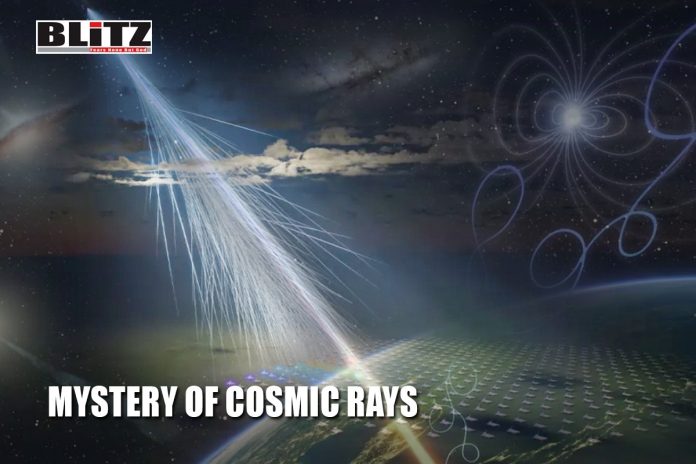The Large High-Altitude Air Shower Observatory (LHAASO) has made a groundbreaking discovery within the Cygnus star-formation region, revealing a colossal ultra-high-energy gamma-ray bubble structure. This unprecedented revelation, disclosed by the Institute of High Energy Physics of the Chinese Academy of Sciences (CAS), marks humanity’s inaugural identification of the source of cosmic rays exceeding 10 Peta-Electronvolts (PeV) in energy, as reported by the Global Times.
Cosmic rays, comprising primarily of charged particles such as protons, originate from outer space, constituting a pivotal area of inquiry within modern astrophysics. Over recent decades, cosmic ray measurements have illuminated a distinct feature in the energy spectrum known as the “knee” at around 1 PeV. This delineation, akin to the joint of a knee, holds profound significance in understanding the origins of cosmic rays.
Scientists posit that cosmic rays below the “knee” threshold likely emanate from astrophysical entities within the confines of the Milky Way. Moreover, the presence of this spectral “knee” suggests that the upper limit for propelling protons from the majority of cosmic ray sources within our galaxy hovers around a few PeV. Nevertheless, the enigma surrounding the provenance of cosmic rays within this “knee” region persists, remaining a focal point of cosmic ray investigations in recent years.
In a significant breakthrough, LHAASO has unveiled an immense ultra-high-energy gamma-ray bubble structure nestled within the Cygnus star-formation domain. Within this structure, multiple photons have been detected surpassing the 1 PeV threshold, with the most energetic photon registering an astounding 2.5 PeV. This observation strongly hints at the presence of a super cosmic ray accelerator housed within the bubble.
According to disclosures from the Institute of High Energy Physics, this super cosmic ray accelerator exhibits a continuous operation, propelling cosmic ray particles to staggering energies of up to 20 PeV and subsequently injecting them into the vast expanse of interstellar space.
Through extensive research conducted within the confines of this bubble-like structure, scientists have discerned the presence of a cosmic ray accelerator, believed to be the primary wellspring of cosmic rays. This accelerator perpetually generates cosmic ray particles with energies surpassing 10 Peta-electron volts, marking a groundbreaking revelation in cosmic phenomena. Through meticulous analysis, researchers have identified a colossal star cluster situated near the bubble’s core, denoting it as the “O-star association” and “B-star association”, potentially serving as the genesis of the cosmic rays intercepted.
The Institute heralds this discovery as the inaugural identification of a super cosmic ray accelerator. With prolonged observation periods, LHAASO is poised to unveil additional such accelerators, offering a promising pathway toward elucidating the cosmic ray origin enigma within the Milky Way.
Furthermore, LHAASO’s findings indicate a pronounced augmentation in cosmic ray density within the neighboring interstellar expanse, surpassing the Milky Way’s average levels by a considerable margin. Remarkably, the spatial expansion of this density surplus extends beyond the confines of the observed bubbles, providing a plausible rationale for the previously noted excess of diffuse gamma-ray emissions along the Galactic Plane, as detected by LHAASO.
Professor Elena Amato, a distinguished astrophysicist from the Italian National Institute for Astrophysics, underscored the profound implications of the discovery on the broader understanding of Cosmic Rays. She emphasized that these findings not only revolutionize our comprehension of diffuse emissions but also hold significant ramifications for the modeling of cosmic ray transport within the Galaxy.
LHAASO stands as a pivotal national scientific and technological asset dedicated to cosmic ray research. Positioned at an elevation of 4410 meters atop Mount Haizi in Daocheng County, Southwest China’s Sichuan Province, this facility reached completion in July 2021. Since then, it has commenced high-quality and stable operations, emerging as the world’s most sensitive ultra-high-energy gamma-ray detection apparatus.




